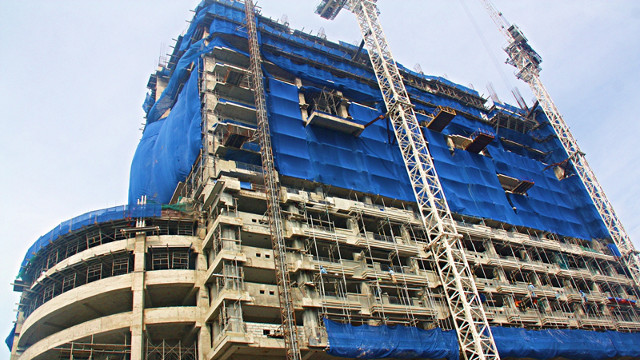SUMMARY
This is AI generated summarization, which may have errors. For context, always refer to the full article.
MANILA, Philippines – Senator Pia Cayetano is likely to recommend the filing of charges against DMCI Homes, saying she is convinced that the real estate giant was irresponsible in the construction of the controversial Torre de Manila.
“If I recommend prosecution which most likely I will, I will cite existing laws to that extent….I feel more convinced also now that I have more information that it appears to me that the DMCI was really a builder in bad faith,” Cayetano said after the September 4 Senate inquiry on the construction of the tower.
She cited the fact that despite a resolution from the Manila City Council to suspend Torre de Manila construction in June 2012 because of a “hastily” issued zoning permit, DMCI Homes began building the 40-plus storey tower.
The Manila Zoning Board of Adjustments and the Manila City Council only approved DMCI’s appeal for an exemption on January 2014, by which time the building was already more than two storeys high.
“That means that from June 2012 to January 2014, they were in bad faith. So to me, the law is very clear, if you are in bad faith, you pay for the damages of whatever cost you incurred and whatever further damages to the environment are and to other persons,” said Cayetano who chairs the Senate Committee on Education, Arts and Culture.
She also she may recommend the demolition of the building, which is already 19 storeys into construction.
Better enforcement of heritage laws
After listening to various resource persons during the hearing, Cayetano said she will also push for a bigger budget for national cultural agencies like the National Commission on Culture and the Arts (NCCA) and the National Historical Commission of the Philippines (NHCP).
The lack of resources of these cultural regulating bodies may explain why there is low compliance of the National Cultural Heritage Act of 2009 which requires national and local governments and the private sector to protect and conserve historical sites.
According to NCCA consultant Rose Angeles, many local governments do not even know that they are supposed to register historical sites in their community with the NCCA. NCCA can only protect the sites if listed in its official registry.
The city of Manila, which has many historical structures, has not complied with this requirement.
So far, only members of the Heritage Conservation Society (HCS) have a 4-volume list of the city’s heritage sites, said its representative Gemma Cruz-Araneta, who was tourism secretary during the Estrada administration.
Without efforts to list down culturally-significant structures, local governments and the public remain ignorant of what they have to protect.
Having a list would have enabled LGUs and the NCCA to create a zoning plan sensitive to historical landmarks. Developers would then be informed if they were building on property subject to restrictions, whether it be on building height or design.
Major gaps like this have eventually set the stage for the rise of Torre de Manila.
New Manila City ordinance
For its part, the Manila City Council commits to refiling an ordinance that prohibits the construction of buildings that would ruin the sightline or view of any historical and cultural site or monument.
The ordinance, filed by Councilor DJ Bagatsing as early as July 2012, would have made it illegal for DMCI Homes to build Torre de Manila to its height of over 40 storeys.
But the ordinance was vetoed by then mayor Alfredo Lim for being “ultra vires,” a term that means the decision was beyond the council’s legal power or authority.
Chua had mentioned in the previous hearing that during Lim’s time, there was a rift between the city council and the Executive branch such that permits were issued by executive officials without the knowledge or approval of the city council.
Representatives from the Knights of Rizal said they plan to file charges against DMCI Homes with hopes of securing a temporary restraining order to halt construction.
Cayetano also recommended to stakeholders like the National Parks Development Committee (NPDC) to meet with the Solicitor General who can represent the interests of the Filipino public in court.
NPDC Executive Director Elizabeth Espino fretted that at the construction rate of 3 floors a week, Torre de Manila could be 41 storeys by November.
In the end, all resource persons present agreed there needs to be a stronger push for heritage conservation in Manila which seems to be losing its identity to unregulated development.
Cruz-Araneta said: “People say ‘Napag-iiwanan na ang Manila‘ (Manila is being left behind). Manila wants to be Makati or Taguig but it can never be because it wasn’t just an open field. It has to appreciate what it already has.” – Rappler.com
Add a comment
How does this make you feel?






There are no comments yet. Add your comment to start the conversation.